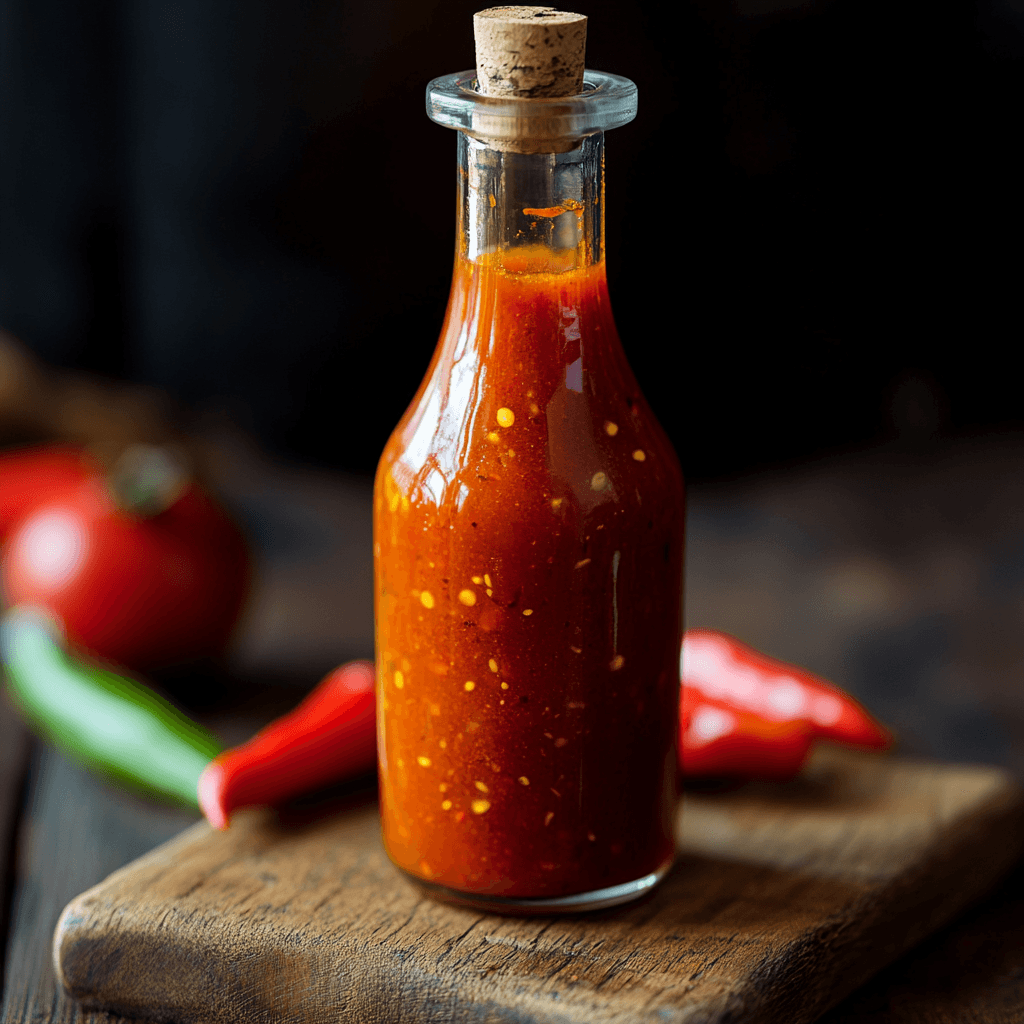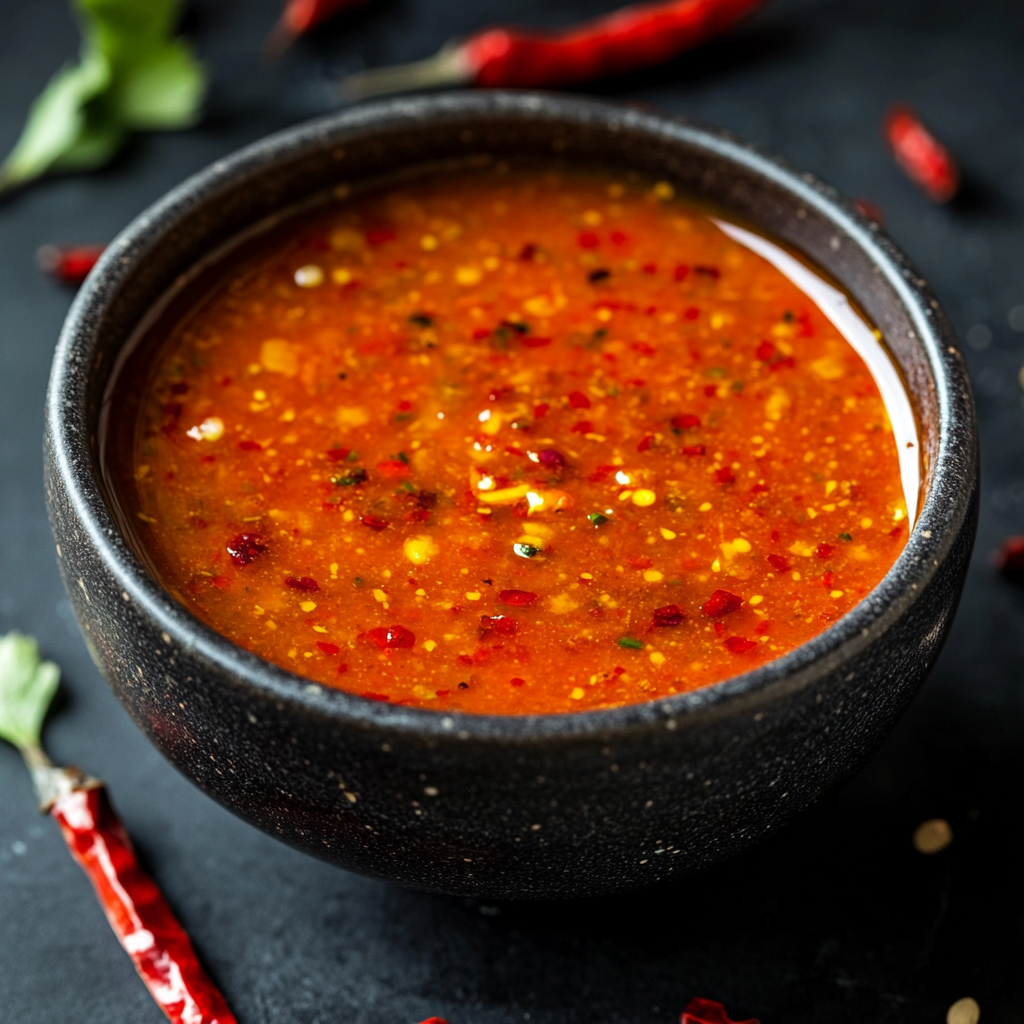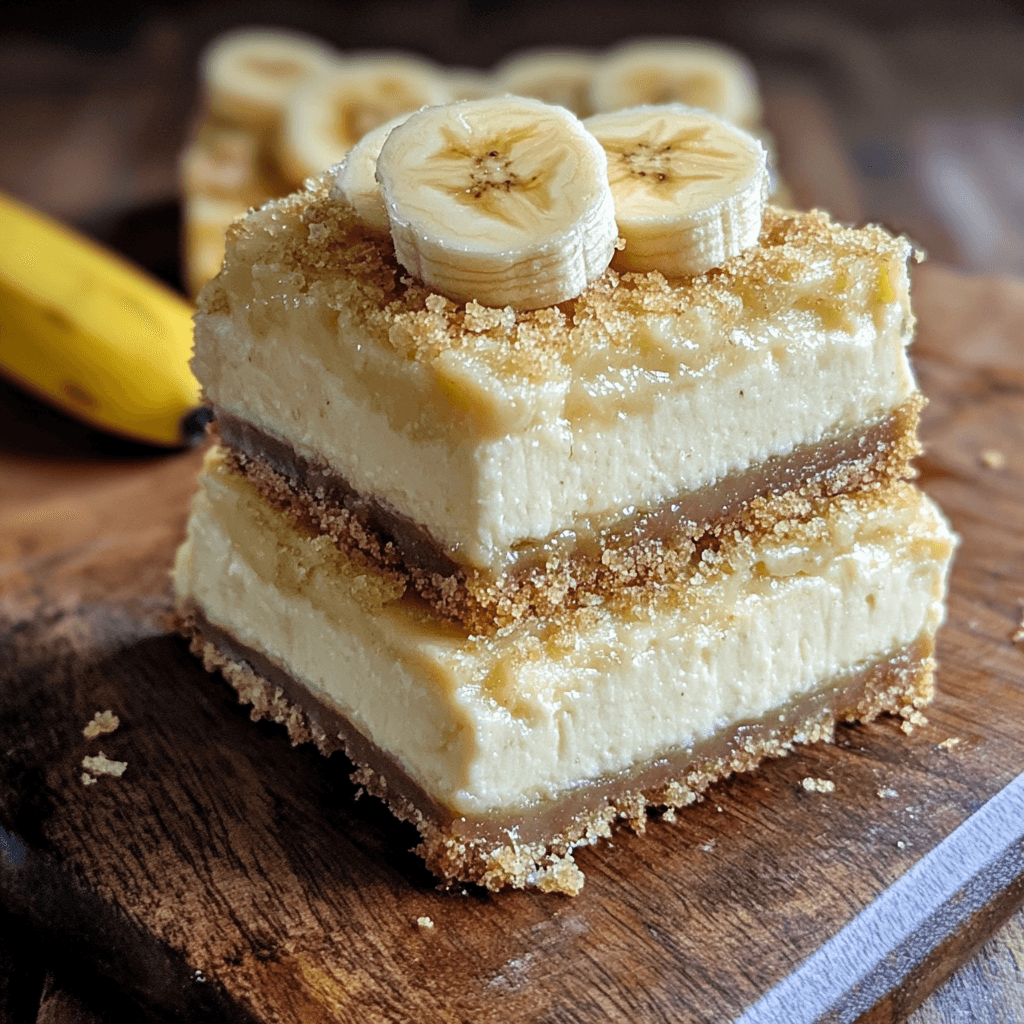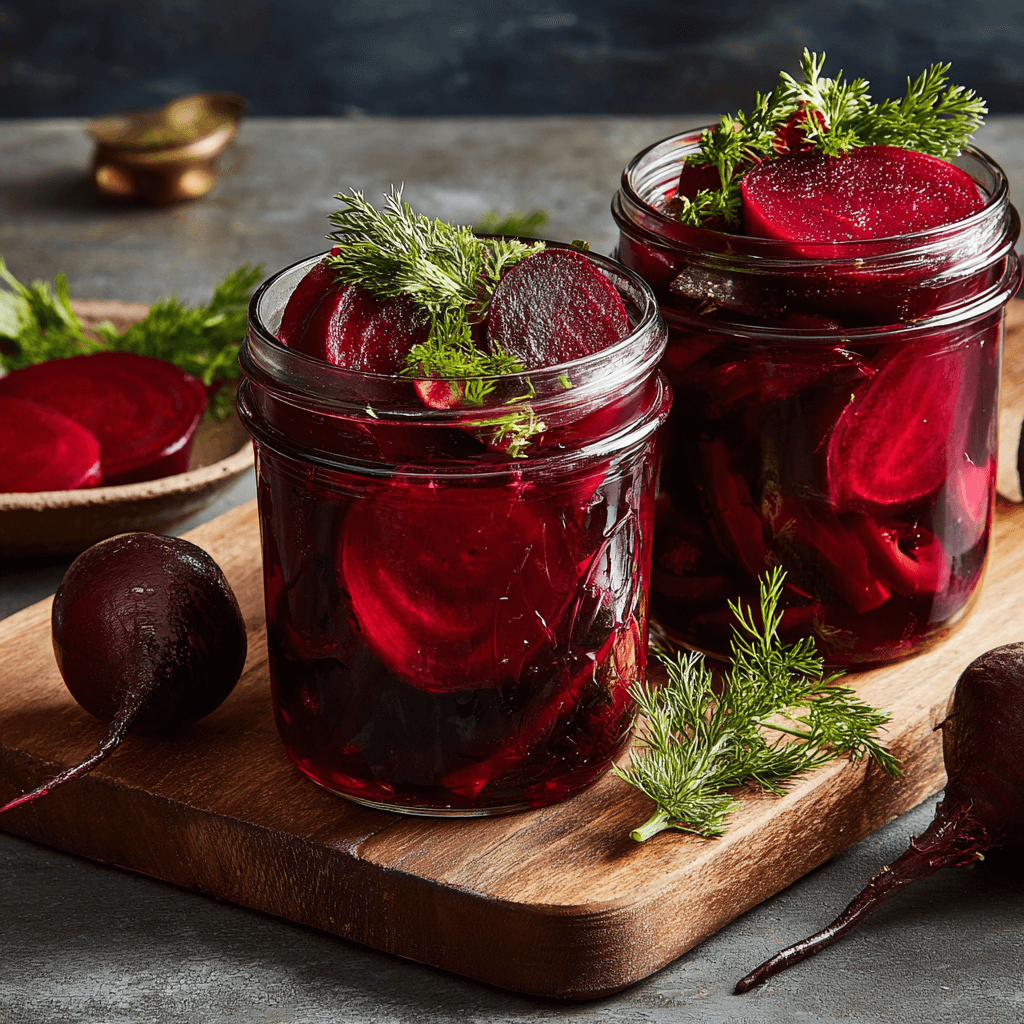Introduction to Hot Sauce
Brief History of Hot Sauce
If you’re a fan of bold, spicy flavors, this hot sauce recipe is perfect for you. With just a few simple ingredients, you can create a customizable sauce that adds heat and flavor to any dish. Whether you prefer a tangy vinegar base or a smoky twist, this recipe is easy to adjust to your taste. Start your hot sauce journey today and elevate your meals with homemade goodness!
What Makes Hot Sauce an Essential Condiment
Hot sauce stands out not only for its heat but also for its remarkable versatility. It balances spiciness with tangy, savory, or sweet flavors, making it an easy way to elevate a wide range of dishes. For instance, you can drizzle it over eggs, stir it into soups, or use it as a marinade for meats. Furthermore, its ability to complement many types of food ensures its place as a staple in kitchens everywhere.
Global Variations and Popularity
Hot sauce varies significantly across cultures, each offering unique flavors. For example, Mexican hot sauces often feature smoky chipotle peppers for a bold taste. Similarly, Louisiana-style hot sauces, like Tabasco, are tangy and vinegar-based, making them ideal for fried foods. In Southeast Asia, chili-garlic sauces like sriracha provide a bold, spicy kick. Meanwhile, Caribbean sauces frequently blend chili peppers with fruits such as mango or papaya, resulting in a sweet and spicy combination. Consequently, the adaptability of hot sauce has made it a beloved condiment worldwide.
Types of Hot Sauce Recipes
Fermented vs. Fresh Hot Sauces
Hot sauces generally fall into two main categories: fermented and fresh. Fermented hot sauces, such as Tabasco, age chili peppers with salt for weeks or months, allowing complex and tangy flavors to develop. In contrast, fresh hot sauces skip the fermentation process and focus on the natural, bright taste of the ingredients. Although fermentation requires patience, it results in deeper flavors. However, fresh sauces are quicker to make and ready for immediate use, making them a great option for those in a hurry.
Vinegar-Based Hot Sauces
Vinegar-based hot sauces are some of the most popular and versatile options available. These sauces typically consist of chili peppers, vinegar, and salt, creating a tangy and sharp flavor profile. Moreover, their long shelf life makes them an excellent choice for everyday use. For example, Louisiana-style hot sauces pair beautifully with fried foods, soups, and stews, enhancing their flavors effortlessly.
Fruit-Infused and Specialty Hot Sauces
For those who enjoy experimenting, fruit-infused hot sauces offer a creative twist. These sauces combine the heat of chili peppers with the sweetness of fruits like mango, pineapple, or peach, resulting in a unique sweet-and-spicy profile. Additionally, specialty hot sauces often include ingredients such as garlic, ginger, or smoked peppers, creating bold and exciting flavor combinations. Thus, these options are perfect for adventurous eaters looking to add variety to their meals.
By exploring these different types of hot sauces, you can find recipes that suit your tastes and add depth to your cooking repertoire.
Key Ingredients for Hot Sauce
Essential Ingredients: Peppers, Vinegar, and Salt
The foundation of any good hot sauce starts with three essential ingredients: chili peppers, vinegar, and salt. Peppers provide the heat and unique flavor profile, while vinegar adds tanginess and acts as a natural preservative. Salt enhances the overall taste and helps balance the sauce. These simple ingredients create the base for a wide variety of hot sauce styles, from mild and tangy to fiery and bold.
Optional Add-Ins for Unique Flavors
To make your hot sauce stand out, consider adding a few optional ingredients. For instance, garlic and onion bring depth and savory notes, while fruits like mango or pineapple add sweetness. Spices such as cumin, smoked paprika, or ginger can give your sauce an earthy or aromatic quality. For an extra kick, try a splash of hot sauce or a pinch of cayenne pepper. By experimenting with these add-ins, you can create a sauce tailored to your taste.
Picking the Right Peppers
Choosing the right peppers is crucial for the flavor and heat level of your hot sauce. For mild heat, jalapeños or poblanos work well. Serrano or cayenne peppers provide a moderate spice, while habanero and ghost peppers deliver intense heat for spice enthusiasts. Additionally, consider the flavor of the peppers. For example, chipotle peppers offer a smoky profile, whereas fresh red chilies bring a bright, fruity taste. Selecting the right pepper ensures your hot sauce aligns with your desired flavor and spice level.
Tools and Equipment Needed
Kitchen Essentials for Making Hot Sauce
To make hot sauce, you’ll need a few basic kitchen tools:
- Blender or Food Processor: Essential for creating a smooth and well-blended sauce.
- Knife and Cutting Board: For chopping peppers and other ingredients.
- Saucepan: Useful for cooking the ingredients to enhance their flavors.
- Strainer: Helps remove seeds and pulp for a smoother texture.
Having these tools on hand makes the process efficient and ensures a consistent result.
The Importance of Gloves When Handling Peppers
Handling chili peppers requires caution, as their oils can irritate your skin and eyes. Always wear gloves when chopping or deseeding peppers to avoid burns. Additionally, wash your hands thoroughly after handling peppers, even if you’re wearing gloves, to prevent accidental transfer of the oils to your face or other sensitive areas. Taking these precautions ensures a safer and more comfortable cooking experience.
Storage Options for Sauces
Proper storage is key to maintaining the flavor and freshness of your hot sauce. For short-term use, store the sauce in a clean, airtight glass jar or bottle in the refrigerator. If you’ve made a larger batch, consider freezing portions in small containers for later use. Fermented hot sauces last longer due to their natural preservation process and can be stored at room temperature in sterilized bottles. By choosing the right storage method, you can enjoy your homemade hot sauce for weeks or even months.
How to Choose the Right Peppers
Heat Levels: From Mild to Fiery
Selecting the right peppers depends on the heat level you want for your hot sauce. If you prefer a mild kick, go for peppers like poblanos, banana peppers, or Anaheim chilies. For moderate spice, serrano and cayenne peppers are excellent choices. If you’re a fan of fiery heat, consider habanero, scotch bonnet, or ghost peppers. Always refer to the Scoville Heat Unit (SHU) scale to gauge the spiciness of different peppers and choose accordingly.
Flavor Profiles of Popular Chili Peppers
The flavor of your hot sauce is heavily influenced by the type of peppers you choose. For example:
- Jalapeños: Bright and slightly grassy, ideal for versatile sauces.
- Chipotles: Smoky and rich, perfect for barbecue-inspired sauces.
- Habaneros: Fruity and floral, excellent for tropical or fruit-infused sauces.
- Serranos: Clean and fresh, great for everyday sauces.
Understanding the flavor profiles of chili peppers helps you create a sauce that aligns with your taste preferences.
If a specific pepper isn’t available, you can substitute with a similar option. For instance, use jalapeños in place of serranos for less heat. Chipotle peppers can replace smoked peppers like ancho for a similar flavor. If a pepper’s heat is too intense, mix it with milder varieties to balance the spice level. Substitutions allow you to adapt the recipe to what you have on hand without compromising flavor.
Step-by-Step Instructions
Preparing the Ingredients
- Wash the Peppers: Rinse all peppers thoroughly to remove dirt or residue.
- Deseed (Optional): If you want less heat, cut the peppers open and remove the seeds and membranes.
- Chop Other Ingredients: Prepare additional ingredients like garlic, onions, or fruits to ensure they blend smoothly.
Proper preparation ensures all ingredients are clean, evenly sized, and ready for blending.
Blending and Cooking the Sauce
- Combine Ingredients: Place the peppers, vinegar, salt, and any add-ins into a blender or food processor.
- Blend: Process the mixture until smooth. For a chunkier sauce, pulse the blender instead of blending continuously.
- Cook the Sauce: Transfer the blended mixture to a saucepan. Cook on medium heat for 10–15 minutes to enhance flavors and thicken the sauce slightly. Stir occasionally to prevent sticking.
Cooking the sauce deepens the flavors and ensures a cohesive consistency.
Adjusting Seasoning for Perfect Balance
- Taste and Adjust: Once the sauce has cooked, taste it. If it’s too tangy, add a pinch of sugar. For more heat, stir in extra chili powder or cayenne.
- Consistency Check: If the sauce is too thick, add a splash of water or vinegar. If it’s too thin, let it simmer longer to reduce.
- Final Touches: Add a pinch of salt or a squeeze of lime juice to round out the flavors.
These final adjustments ensure your hot sauce has the perfect balance of heat, tanginess, and depth.
By following these steps, you can create a homemade hot sauce that is not only flavorful but also tailored to your specific preferences. Enjoy!
Fermenting Hot Sauce for Depth of Flavor
Basics of Fermentation
Fermentation is a natural process where beneficial bacteria, such as lactobacillus, break down sugars in food, producing lactic acid. For hot sauce, this method not only enhances depth of flavor but also introduces tangy and umami notes. Moreover, fermentation is simple yet transformative, elevating your hot sauce to a new level. Typically, it involves combining chopped chili peppers, salt, and water, and then allowing the mixture to ferment over several weeks.
How to Safely Ferment Hot Sauce
- Prepare the Peppers: Begin by chopping your peppers and additional ingredients, like garlic or onions.
- Mix with Salt: Next, add 2–3% salt by weight of the total ingredients. This ratio creates an environment where good bacteria thrive while harmful ones are suppressed.
- Submerge in Brine: After mixing, place the ingredients in a clean jar, ensuring they are fully submerged in the salty brine. Use a weight to keep them below the liquid.
- Cover and Vent: Then, cover the jar with a loose lid or a fermentation airlock to allow gases to escape safely.
- Store Safely: Finally, keep the jar in a cool, dark place for 1–3 weeks, checking daily to release built-up gases and ensure the peppers remain submerged.
By following these steps, you can safely ferment hot sauce while ensuring the flavors develop fully.
Benefits of Fermentation for Flavor and Preservation
Fermentation offers two primary benefits: enhanced flavor and extended shelf life. First, it adds tangy, complex notes to the hot sauce, creating a richer and more layered taste. Furthermore, the natural lactic acid acts as a preservative, extending the sauce’s shelf life without needing artificial additives. For these reasons, fermented hot sauces are highly valued by enthusiasts.

Storing and Preserving Hot Sauce
Shelf Life of Homemade Hot Sauce
The shelf life of homemade hot sauce depends largely on its preparation and storage method. For example, non-fermented sauces stored in the refrigerator typically last 1–2 weeks. In contrast, fermented sauces, due to their natural preservation process, can remain fresh for several months. Always check for signs of spoilage, such as mold or off smells, before using your sauce.
Freezing vs. Refrigeration
Refrigeration is the easiest and most common way to store hot sauce, keeping it fresh and accessible. However, freezing can be a smart option if you’ve made a large batch. To freeze effectively, portion the sauce into small airtight containers or ice cube trays for convenient use. Although freezing may slightly alter the texture, it is an excellent way to extend the shelf life without compromising the flavor significantly.
Using Sterilized Bottles for Storage
For long-term storage, using sterilized bottles is essential. Sterilization eliminates bacteria and ensures the safety of your hot sauce. Follow these steps:
- Wash Bottles Thoroughly: Start by cleaning them with hot, soapy water and rinsing well.
- Boil for Sterilization: Next, submerge the bottles in boiling water for 10 minutes to kill bacteria.
- Air Dry: Finally, place the bottles upside down on a clean towel to dry completely.
Once sterilized, pour the hot sauce into the bottles while it’s still warm and seal tightly. Consequently, sterilized bottles maintain the freshness and safety of your homemade hot sauce for a longer time.
By fermenting your hot sauce and storing it properly, you can enjoy a flavorful and long-lasting condiment that enhances countless dishes.
Customizing Your Hot Sauce Recipe
Adding Sweetness with Fruits
Adding fruits to your hot sauce can create a delightful balance of heat and sweetness. For instance, mango, pineapple, or peaches pair wonderfully with chili peppers, adding a tropical twist. Apples and pears, on the other hand, bring a more subtle, natural sweetness. When blending fruits, adjust the spice levels to ensure the heat complements the sweetness rather than overpowering it. This customization is perfect for sauces served with grilled chicken, seafood, or even desserts.
Making Smoky Sauces with Smoked Peppers
For a rich, smoky flavor, consider using smoked peppers like chipotle or smoked paprika in your hot sauce. These ingredients add depth and a slightly charred taste, ideal for barbecue sauces or marinades. To intensify the smokiness, you can also grill fresh peppers before blending them into your recipe. This approach works exceptionally well for dishes like ribs, roasted vegetables, or burgers.
Herbal and Spice Infusions
Herbs and spices can elevate your hot sauce by adding layers of flavor. Fresh cilantro, basil, or parsley give a refreshing note, while dried spices like cumin, coriander, or turmeric offer an earthy undertone. For a bold kick, experiment with garlic, ginger, or even star anise. By infusing your sauce with these ingredients, you can tailor it to complement specific cuisines or dishes.
Pairing Hot Sauce with Foods
Perfect Pairings for Different Cuisines
Hot sauce is incredibly versatile and can enhance a variety of cuisines. For Mexican dishes, tangy and smoky sauces pair beautifully with tacos, enchiladas, or burritos. In Asian cuisine, chili-garlic or sriracha-inspired sauces are excellent with noodles, stir-fries, or dumplings. For Southern classics like fried chicken or collard greens, a vinegar-based hot sauce adds the perfect tangy kick. Matching the sauce to the cuisine ensures a harmonious flavor combination.
Creative Uses for Hot Sauce Beyond Traditional Dishes
Hot sauce isn’t just for traditional uses like drizzling on eggs or tacos—it can transform unexpected dishes. For example:
- Cocktails: Add a splash to a Bloody Mary or margarita for extra heat.
- Desserts: Use a fruity hot sauce as a topping for vanilla ice cream or cheesecake.
- Snacks: Mix it into popcorn seasoning or toss it with roasted nuts for a spicy snack.
- Salad Dressings: Blend hot sauce with olive oil and lemon juice for a zesty dressing.
By thinking outside the box, you can discover countless ways to incorporate hot sauce into your meals and elevate everyday dishes.
Tips for Perfecting Your Hot Sauce
Balancing Heat, Acidity, and Sweetness
Creating the perfect hot sauce involves balancing three key elements: heat, acidity, and sweetness. Start by selecting the right chili peppers for your desired spice level. Then, use vinegar or citrus juice to add tanginess, ensuring the sauce isn’t overwhelmingly spicy. If the sauce tastes too sharp, introduce sweetness with honey, sugar, or fruit to round out the flavors. Always taste as you go to achieve a harmonious blend.
Common Mistakes to Avoid
- Overpowering the Heat: Adding too many hot peppers without balancing them can make the sauce inedible. Start with less and gradually increase the spice.
- Neglecting Acidity: Skipping vinegar or citrus juice may result in a flat-tasting sauce. Acidity brightens the flavors and acts as a preservative.
- Skipping Consistency Checks: Failing to adjust the thickness can make the sauce difficult to pour. Add water or vinegar to thin it, or let it simmer longer to thicken.
Avoiding these mistakes ensures your hot sauce is flavorful and versatile.
Testing Your Hot Sauce for Consistency
Consistency plays a significant role in a hot sauce’s usability. To test, pour a small amount onto a plate and observe how it flows. If it’s too thick, add a splash of vinegar or water and blend again. For a thinner, smoother sauce, strain out pulp and seeds using a fine mesh sieve. Adjusting consistency to your preference makes the sauce more enjoyable and easier to use.
Frequently Asked Questions (FAQs)
What Is the Main Ingredient in Hot Sauce?
The main ingredient in hot sauce is chili peppers, which provide the heat and flavor. Additional ingredients like vinegar, salt, and spices enhance the taste and act as preservatives. Depending on the recipe, other elements such as fruits or garlic may be included to create unique variations.
What Vinegar Is Best for Hot Sauce?
Distilled white vinegar is the most common choice for hot sauce because of its neutral flavor and preservative qualities. However, apple cider vinegar adds a fruity tang, while rice vinegar offers a milder, slightly sweet note. The type of vinegar you choose depends on the flavor profile you want for your sauce.
Does Homemade Hot Sauce Need to Be Fermented?
No, fermentation is not required for homemade hot sauce, but it does add complexity and depth to the flavor. Fresh hot sauces are quicker to make and have a brighter taste, while fermented ones offer tangy and umami notes. Both methods produce delicious results, so it depends on your personal preference and time availability.
Can I Sell Hot Sauce That I Make at Home?
Yes, you can sell homemade hot sauce, but you must follow local regulations and food safety guidelines. This typically involves using a commercial kitchen, labeling products with ingredients and allergen information, and obtaining necessary permits. Additionally, you should test the sauce’s pH to ensure it’s safe for consumption and has a stable shelf life. Starting small at farmers’ markets or online can help you grow your business gradually.
By following these tips and understanding the basics, you’ll create exceptional hot sauce while addressing common questions about preparation and use.
What’s the best way to store leftovers?
Keep leftovers in an airtight container in the fridge for up to 4 days. Reheat in the microwave or oven until hot and bubbly. For food safety tips, refer to USDA guidelines on leftovers .
The Science Behind Hot Sauce Heat
Understanding Scoville Heat Units
The spiciness of hot sauce is measured in Scoville Heat Units (SHU), which quantify the concentration of capsaicin—the compound responsible for heat. Mild peppers like bell peppers have a SHU of 0, while extremely spicy peppers like Carolina Reapers can reach over 2 million SHU. By understanding SHU, you can better choose peppers that match your desired spice level when making hot sauce.
How Capsaicin Affects the Palate
Capsaicin binds to pain receptors in the mouth, creating the sensation of heat. This reaction doesn’t cause actual harm but tricks the brain into feeling a burning sensation. Interestingly, capsaicin also triggers the release of endorphins, which can create a sense of euphoria for some people. Understanding how capsaicin interacts with the palate helps you appreciate the balance of heat and flavor in hot sauce.
Tips for Reducing Heat If It’s Too Spicy
If your hot sauce is too spicy, there are several ways to tone it down:
- Add More Ingredients: Dilute the heat by blending in more non-spicy components like tomatoes, fruits, or vinegar.
- Incorporate Sweeteners: A small amount of honey or sugar can help counteract the heat.
- Use Dairy Products: Adding a splash of cream or yogurt can mellow the spice, though it may change the flavor slightly.
Adjusting the heat ensures your hot sauce is enjoyable for a wider audience.
Health Benefits of Hot Sauce
Capsaicin and Metabolism
Capsaicin, the active compound in chili peppers, has been shown to boost metabolism. It can increase fat oxidation and calorie burning, making it a popular addition for those looking to support weight management. Moreover, capsaicin has mild appetite-suppressing effects, which may help regulate food intake.
Antioxidants in Chili Peppers
Chili peppers are rich in antioxidants like vitamin C and carotenoids, which help combat oxidative stress in the body. These antioxidants contribute to immune system health and may reduce the risk of chronic diseases. Adding hot sauce to your diet is an easy way to incorporate these beneficial compounds.
Nutritional Advantages of Homemade Hot Sauce
Homemade hot sauce is free from preservatives and artificial additives, making it a healthier option. Additionally, you can control the sodium and sugar levels, tailoring the recipe to meet dietary needs. By including fresh ingredients like garlic, onions, and fruits, you can boost the nutritional value of your hot sauce while enjoying its bold flavors.
Cultural Significance of Hot Sauce
Regional Favorites Around the World
Hot sauce is deeply rooted in culinary traditions across the globe. For example, Mexico offers a wide range of sauces like salsa roja and salsa verde, while Louisiana is famous for its vinegar-based sauces like Tabasco. In Southeast Asia, chili-garlic sauces such as sriracha are staples, and Caribbean hot sauces often blend chili peppers with fruits for a sweet and spicy flavor. These regional variations reflect the diverse ways people enjoy and adapt hot sauce to their cuisines.
Hot Sauce in Culinary Traditions
Hot sauce is more than just a condiment—it’s an integral part of many culinary traditions. In some cultures, it’s used as a marinade to tenderize meats, while in others, it’s a table staple to add flavor to every meal. Its versatility and ability to elevate dishes have made it a beloved addition to countless recipes.
How Hot Sauce Has Influenced Food Culture
The popularity of hot sauce has transcended cultural boundaries, influencing food trends and inspiring innovation. Today, chefs experiment with unique ingredients and heat levels to create gourmet hot sauces. Hot sauce challenges and competitions, such as those featuring ghost peppers or Carolina Reapers, have also gained traction, showcasing the fiery side of culinary exploration.
By understanding the science, health benefits, and cultural impact of hot sauce, you can fully appreciate this versatile and globally loved condiment.
To enrich the “Hot Sauce Recipe” article with internal links, consider including references to related recipes and guides on the website. For example, when discussing sauces with varying spice levels or styles, link to The Ultimate Guide to Cane’s Sauce Recipe for readers interested in creamy dipping sauces. Additionally, while exploring global hot sauce variations, mention The Ultimate Guide to Chick-fil-A Sauce Recipe to highlight differences between spicy and sweet condiments. For those looking to complement their hot sauce with the right dishes, suggest The Ultimate Guide to Chicken Tacos Recipe as a perfect pairing. These links will enhance the reader’s experience and keep them engaged with more content on the site.
Conclusion
Why Everyone Should Try Making Their Own Hot Sauce
Making your own hot sauce is a rewarding experience that allows you to tailor flavors to your preferences. Not only is it cost-effective, but it also gives you control over the ingredients, ensuring a healthier and fresher product. Whether you enjoy a mild tang or crave fiery heat, homemade hot sauce provides a versatile condiment that elevates every meal.
Encouragement to Experiment with Flavors
One of the joys of making hot sauce is experimenting with different ingredients and techniques. Try blending peppers with fruits like mango or pineapple for a sweet twist, or incorporate smoked peppers for a rich, earthy flavor. You can also adjust the spice level and acidity to create a sauce that’s uniquely yours. By experimenting, you can discover flavor combinations that perfectly complement your favorite dishes.
Final Pro Tips
To perfect your hot sauce, always taste as you go and adjust the seasoning to balance heat, acidity, and sweetness. Use fresh, high-quality ingredients to enhance the flavor, and don’t skip the resting period to let the flavors meld. If you’re fermenting your sauce, ensure proper hygiene and storage to avoid spoilage. Lastly, have fun with the process—hot sauce making is as much about creativity as it is about flavor.
With these tips and encouragement, you’re ready to create a hot sauce that’s delicious, personalized, and sure to impress. Enjoy the journey of crafting your very own signature hot sauce!






5 thoughts on “The Ultimate Guide to Hot Sauce Recipe”
Comments are closed.